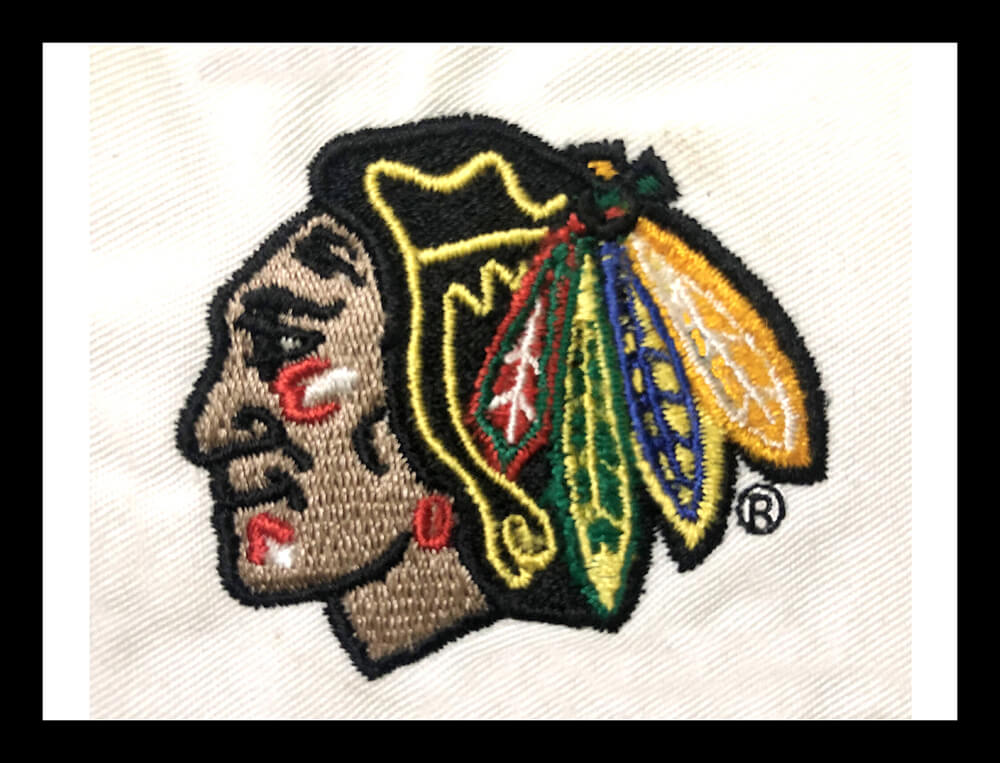Professional Digitizing for Embroidery: High-Quality Designs
Professional Digitizing for Embroidery: High-Quality Designs
Blog Article
Streamlining the Art of Needlework Digitizing: Step-by-Step Guide
Embroidery digitizing is a careful craft that demands accuracy and creativity. As modern technology proceeds to advancement, the digitization process has actually become a lot more easily accessible, enabling lovers to bring their detailed layouts to life easily. In this guide, we will certainly decipher the intricacies of needlework digitizing, damaging down each step carefully to enhance the process and equip both beginners and skilled embroiderers alike. Remain tuned to find exactly how you can simplify this complex art form and transform your creative visions into magnificently embroidered masterpieces.
Recognizing Needlework Digitizing Software Application
Needlework digitizing software functions as a vital tool for transforming detailed designs right into electronic layouts suitable with embroidery machines, promoting precise stitching and personalization. This specific software application permits customers to import different photo data styles, such as JPG or PNG, and convert them right into embroidery machine-readable layouts like DST, EXP, or PES - Digitizing for Embroidery. By using features like stitch editing, padding options, and string shade option, digitizing software program allows customers to control every aspect of the layout process
Additionally, advanced needlework digitizing software provides devices for producing intricate layouts, changing stitch thickness, and integrating complex details. Users can also sneak peek the design before sewing it out, making sure accuracy and reducing mistakes. Furthermore, numerous software programs give automated attributes that assist streamline the digitizing process, saving time and effort.
Comprehending the abilities of embroidery digitizing software program is vital for accomplishing high-grade lead to needlework jobs. By understanding this device, needlework enthusiasts and experts can release their imagination and bring elaborate layouts to life with accuracy and efficiency.

Selecting the Right Style Documents
After acquainting yourself with the capacities of needlework digitizing software program, the next vital action in the process is choosing the right design apply for your project. Digitizing for Embroidery. When picking a design data for embroidery digitizing, it's vital to consider the complexity of the style, the dimension of the last product, and the type of fabric you will be collaborating with
For elaborate layouts with great details, a high-resolution image or vector file is advised to guarantee that the embroidery equipment can precisely reproduce the layout. Furthermore, the dimension of the end product plays a significant role in selecting the ideal style data. Bigger designs may require higher resolution data to maintain clarity and intensity.
Furthermore, the kind of fabric you will certainly be embroidering on influences the selection of design documents. Different textiles might additional reading call for changes in the design file to guarantee that the stitches are properly lined up and the design appears as meant. By carefully selecting the best design file based upon these aspects, you can set yourself up for a successful embroidery digitizing procedure.
Digitizing Devices and Strategies
Making use of specialized software and accuracy strategies, digitizing devices are necessary in changing detailed styles into embroidery-ready documents. Needlework digitizing software program, such as Wilcom, Hatch, or Embrilliance, provides the necessary platform to transform artwork into stitch information. These programs use attributes like stitch editing and enhancing, underlay choices, and text tools to ensure the design converts flawlessly onto textile.
One of the essential techniques in digitizing is developing a clear course for the embroidery maker to comply with. This involves digitizing each aspect of the style with precision, identifying stitch kinds, thickness, and directions. By using tools like digitizing tablets or software-specific plugins, embroiderers can achieve a high level of accuracy in their digitized designs.
In addition, understanding the art of padding stitching is essential for creating high quality embroidery. Underlay stitching stabilizes the material and creates Continued a structure for the style, ensuring that the last product is both visually appealing and lasting. By understanding these digitizing tools and techniques, embroiderers can raise their craft and bring detailed layouts to life with accuracy and effectiveness.
Customizing Stitch Types and Directions
The choice of stitch types can considerably influence the total look and texture of the embroidered layout. By purposefully integrating these stitch kinds, embroiderers can accomplish deepness and measurement in their styles.
Furthermore, the direction of stitches plays a critical duty in boosting the aesthetic charm of the last embroidery. By trying out with different stitch angles and patterns, embroiderers can bring their designs to life with remarkable information and ins and out.
Testing and Refining Your Digitized Style
To guarantee the precision and high quality of your digitized design, detailed screening and refinement are necessary actions in the embroidery digitizing procedure. As soon as you have finished try this the digitization of your layout, it is crucial to examine it before waging the actual needlework. Testing allows you to determine any kind of potential issues such as thread breaks, sew thickness troubles, or design distortions that might impact the last result.

After screening, it is necessary to improve your digitized design based on the responses from the test sew-out. This might include tweaking stitch settings, changing thickness, or making adjustments to the total layout to achieve the wanted outcome. By iterating with screening and improvement, you can tweak your digitized layout to perfection prior to progressing with the actual needlework procedure.
Final Thought
Finally, understanding the art of embroidery digitizing calls for a complete understanding of the software application, picking the appropriate style documents, utilizing digitizing devices and techniques, personalizing stitch kinds and instructions, and testing and fine-tuning the digitized design. By adhering to these steps, embroiderers can simplify the digitizing procedure and develop top notch stitched designs with precision and efficiency.
Report this page